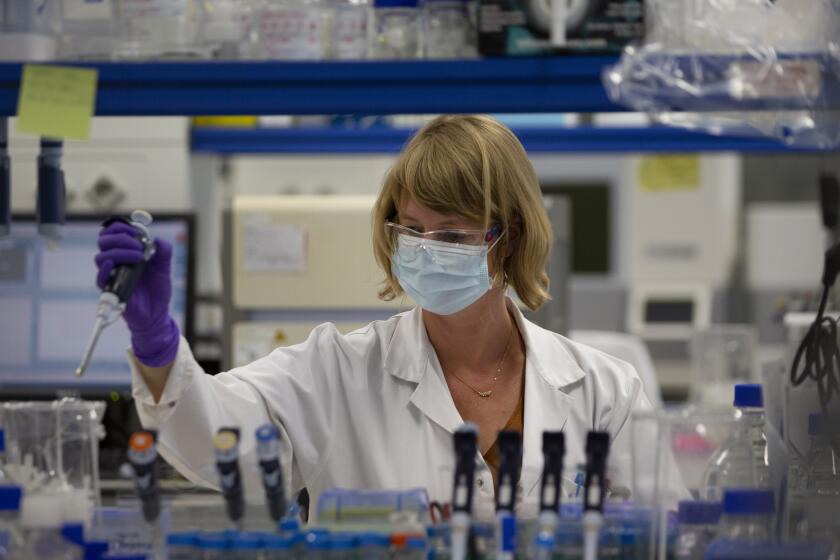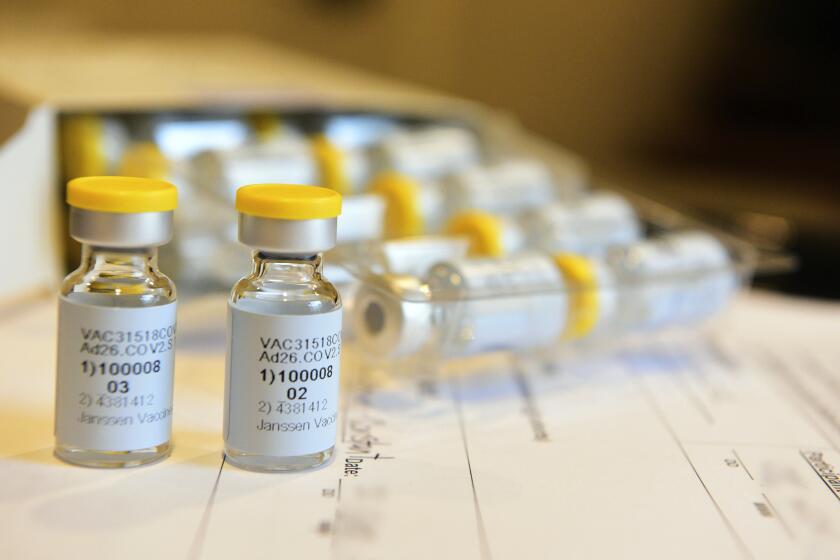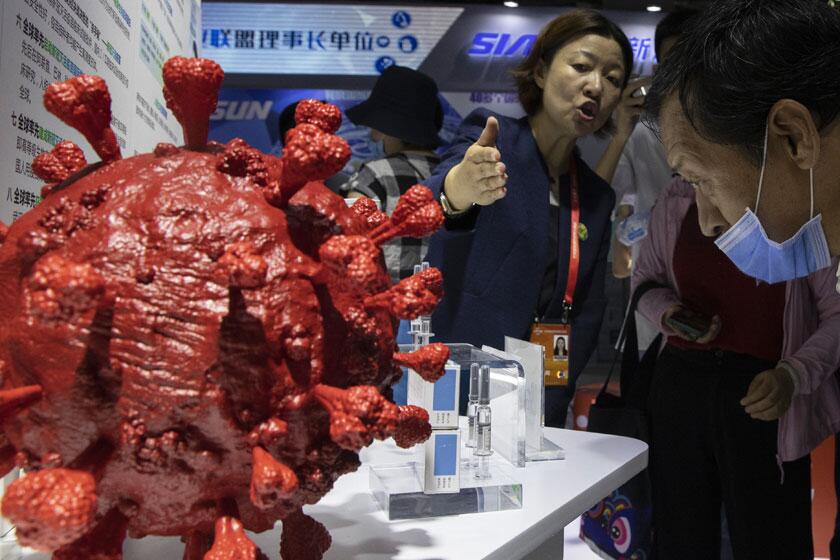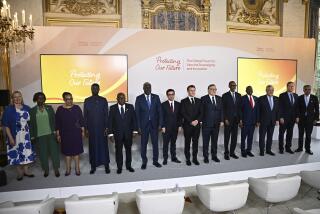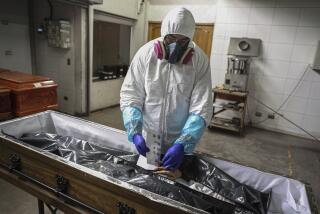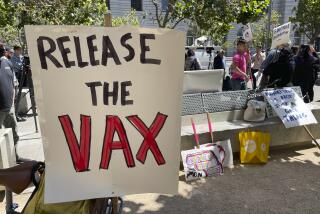Effort to bring coronavirus vaccines to poor countries faces obstacles
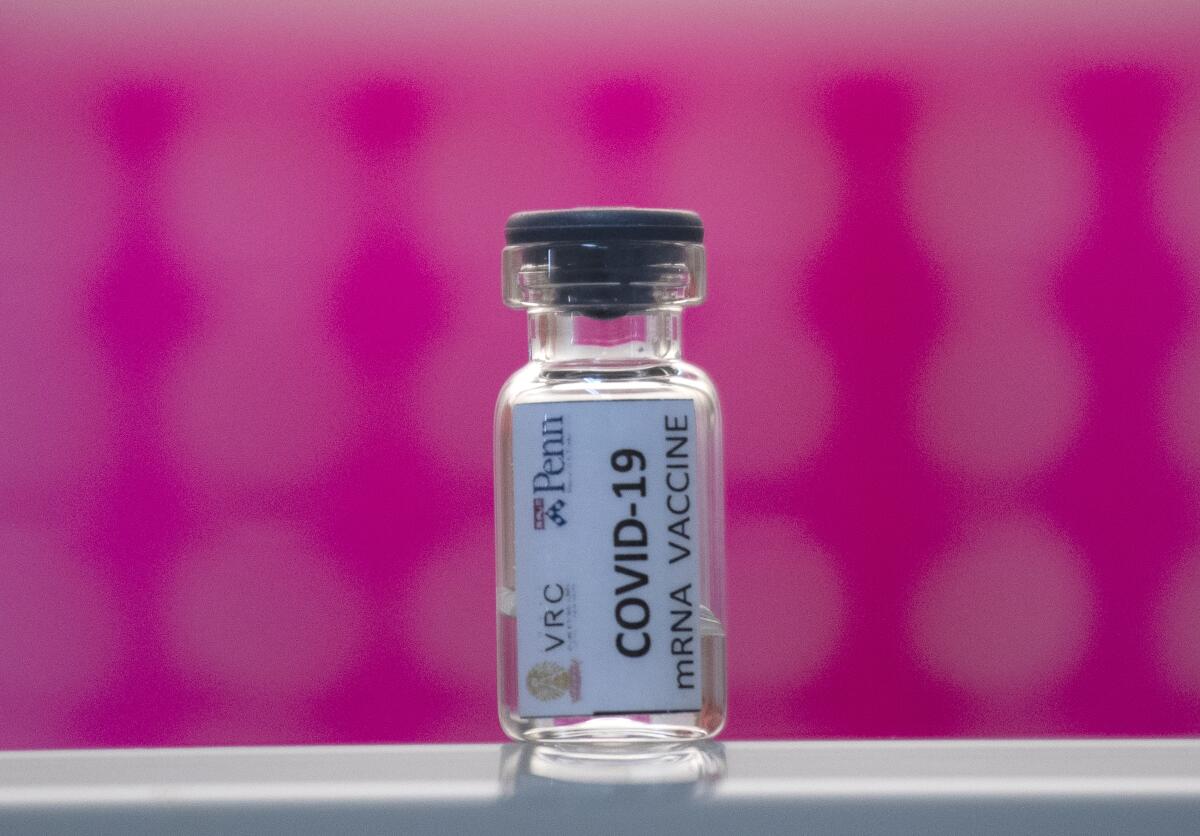
- Share via
LONDON — An ambitious humanitarian project to deliver coronavirus vaccines to the world’s poorest people is facing potential shortages of money, cargo planes, refrigeration and the vaccines themselves — and is running into skepticism even from some of those it’s intended to help most.
In one of the biggest obstacles, rich countries have locked up most of the world’s potential vaccine supply through 2021, and the U.S. and others have refused to join the project, called Covax.
“The supply of vaccines is not going to be there in the near term, and the money also isn’t there,” warned Rohit Malpani, a public health consultant who previously worked for Doctors Without Borders.
Covax was conceived as a way of giving countries access to coronavirus vaccines regardless of their wealth.
It is being led by the World Health Organization, a U.N. agency; Gavi, a public-private alliance that’s partly funded in part by the Bill & Melinda Gates Foundation and that buys immunizations for 60% of the world’s children; and the Coalition for Epidemic Preparedness Innovations, or CEPI, another Gates-supported public-private collaboration.
Covax’s aim is to buy 2 billion doses by the end of 2021, though it isn’t yet clear whether the successful vaccine will require one dose or two. Countries taking part in the project can either buy vaccines from Covax or get them for free, if needed.
Rich countries are placing advance orders for the inevitably limited supply of vaccine to guarantee their citizens are immunized first.
One early problem that has emerged: Some of the world’s wealthiest nations have negotiated their own deals directly with drug companies, meaning that they don’t need to participate in the endeavor at all. China, France, Germany, Russia and the U.S. don’t intend to join.
And so many rich countries pre-bought vaccines from manufacturers — before the shots have even been approved — that the majority of the expected vaccine supply for 2021 is already spoken for.
“As a continent of 1.2 billion people, we still have concerns,” John Nkengasong, director of the Africa Centers for Disease Control and Prevention, said Thursday.
He praised Covax for the solidarity it represents but said there were serious questions about allocation. He said that envoys from African nations were meeting directly with vaccine manufacturers to ask: “If we came to the table with money, how would we get enough vaccines to cover the gap?”
Johnson & Johnson is beginning a huge final-stage study to try to prove if a single-dose COVID-19 vaccine can protect recipients from the coronavirus.
The European Union has donated 400 million euros ($469 million) to support Covax, but the 27-country bloc won’t itself use Covax to buy vaccines, which some see as a vote of no-confidence in the project’s ability to deliver. Instead, the EU has signed its own deals to buy more than 1 billion doses.
Gavi, the WHO and CEPI announced in September that countries representing two-thirds of the world’s population had joined Covax, but they acknowledged that they still need about $400 million more from governments or other sources. Without it, according to internal documents seen by the Associated Press before the organization’s board meeting this week, Gavi can’t sign agreements to buy vaccines.
Covax did reach a major agreement this week for 200 million doses from the Indian vaccine maker Serum Institute, though the company made clear that a large portion of those would go to people in India.
By the end of next year, Gavi estimates the project will need $5 billion more.
Hundreds of thousands of people have taken one of the four leading vaccine candidates in China.
As part of Covax, Gavi and the WHO have asked countries to prioritize frontline healthcare workers for vaccinations and then the elderly, with the goal of vaccinating 20% of the world’s population.
One expensive hurdle is that many of the vaccine candidates need to be kept refrigerated from factory to patient, according to internal documents from Gavi. The pharmaceutical industry has signaled that “air freight for COVID vaccines will be a major constraint,” and a “significant and urgent ramp-up of cold chain capacity” may be needed.
Another obstacle: Many of the leading vaccine candidates require two doses. That will mean twice as many syringes, twice as much waste disposal, and the complications involved in ensuring that patients in remote areas receive the second dose on time and stay free of side effects.
There is also concern that the fear of lawsuits could scuttle deals. According to the internal documents, Gavi told countries that drug companies will probably require assurances that they won’t face product liability claims over deaths or side effects from their vaccines.
Dr. Nakorn Premsi, director of Thailand’s National Vaccine Institute, said officials there are reviewing whether that condition is acceptable. Thailand so far has signed only a nonbinding agreement with Covax.
Alicia Yamin, an adjunct lecturer on global health at Harvard University, said she fears the “window is closing” for Covax to prove workable. She said it was disappointing that Gavi, the WHO and their partners had not pushed pharmaceutical companies harder on issues such as intellectual property or open licenses, which might make more vaccines available.
Yamin said it was likely that developing countries would have to rely on donated vaccines rather than any equitable allocation program.
“I would say that poor countries probably will not get vaccinated until 2022 or 2023,” Yamin said.
More to Read
Sign up for Essential California
The most important California stories and recommendations in your inbox every morning.
You may occasionally receive promotional content from the Los Angeles Times.
